New Revolutionary Advancement in Palm Growing
I found this article and thought I would post it to see what everyone thinks."Pot Planting"
A Revolutionary New Advancement in Palm Growing
by Don Tollefson
I joined the Palm Society in 1988. During the ten years since, I have participated in numerous experiments involving potential, new developments, in palm gardening. Although there have been some much ballyhooed, so-called, breakthroughs, in retrospect, none have had much impact. Most palm gardening progress has been confined to newly discovered palm species, capable of surviving in various climate zones. Since the palms were always capable of survival, the awareness of their ability to survive is more trial and error discovery than an advancement.
At long last, however, I'm pleased to report what could become a legitimate, new advancement in palm gardening. The technique is simple. When you plant the palm in the ground, leave it in the container. Just like it sounds, plant the palm in the ground, container and all. No slitting the sides or cutting open the bottom of the container. Simply plant the entire palm in the ground "pot and all," a.k.a. "pot planting." "Unlikely," you say. This is the universal response, but for those who have tried it, "pot planting" works extremely well. Regardless of your climate zone, pot planting should be of importance to you by substantially increasing your ability to grow many new palm species.
The delay in recognizing the benefit of pot planting was due to the tremendous, initial, psychological resistance, that most growers maintained towards planting something in the ground, in the container. For most, it seemed like taking a bath with their clothes on. The traditional technique of removing the palm from the container, prior to planting, was firmly entrenched. Most growers had never even considered any option other than conventional planting. Ironically, the more advanced the grower, the greater the resistance, causing an effective, common sense method to go unused. But ongoing, trial and error efforts have indicated very desirable, positive benefits. Caveat, the true test of a new concept requires several years for verification, so proceed accordingly.
The following are some personal trials and tribulations during the course of this discovery including theories as to why this method is so effective. My interest in pot planting began shortly after I became a member of the Southern California Palm Society in 1988. For most of that time, my curiosity has been accompanied by the curiosity of my conspirator, Pauleen Sullivan (the Palm Queen). In 1990 at the Ventura/Santa Barbara meeting of the Southern California Palm Society, our group visited the Keeline-Wilcox Kentia Palm Growing Nursery near Ventura, California. Pauleen and I had often remarked at how much more quickly palms grew in the ground than they did above ground in containers. Several, unconfirmable theories were advanced by scientists to explain this phenomenon. But our realization was that the phenomenon existed regardless of whether or not it could be explained.
That day at Keeline-Wilcox, we noted that the grower had pot planted small kentias (Howea forsterianas) in small clay pots. From there, he had an easily trackable system. The palms were allowed to grow pot planted in the clay pots until they reached a robust, marketable size. Then, they were potted up into large, plastic containers, in groups of threes and fives and marketed. We made two observations that day. First, that the grower liked to start the palms as individuals and then plant them into groups. Second, that the grower liked to pot plant the palms in clay pots, rather than grow them above ground conventionally. It was this second observation that we felt was significant. Since the grower had years of experience, we concluded that he most likely had conducted an exhaustive, trial and error determination, that Kentias grew best and fastest pot planted in clay pots.
The following year, Pauleen and I observed some Howeas that had been pot planted in one gallon, plastic pots, at one of her gardens. "Just look at how fast they've grown," she mused, as we observed their remarkable growth. "There must be something to this pot planting." I quite agreed and suggested that we conduct further experiments. It was at this time that we recognized that pot planted palms not only grew much faster than traditionally planted palms. But that they also suffered no ill side effects by remaining pot planted. In fact, the palms seemed even to benefit from being pot planted, long after they had become established. During the next few years, we alternated between pot planting and planting palms conventionally. We began to notice an unmistakable, recurring pattern, in which the palms that were planted conventionally would "sulk" (sit and do nothing) for an extended period of time of from one to three years. Finally, if they survived, they would once again resume normal growth. The pot planted palms, however, would first display an unmistakable, telltale, initial, exuberant spurt of growth, followed by steady growth from then on. It was clear that we were onto something except for one obstacle. Planting palms in the ground in the container was such an unacceptable concept for most enthusiasts, that whenever we mentioned our results, we were practically ridiculed into silence.
Understandably, Pauleen and I became somewhat sheepish in relating our observations. Nevertheless, we continued our investigation. In the spring of 1994, Pauleen asked me if I would plant two, equal sized Licuata ramsayis, side by side as an experiment. She suggested that we pot plant one and plant the other conventionally. I liked the idea and promptly agreed. "Then start digging," she said, bearing what resembled a Cheshire cat's grin. Later, that same day, we also visited the garden of John Tallman, a longtime palm grower. John is the Past President and current Chairman of the Ventura/Santa Barbara Counties Area of the Southern California Palm Society. John's palms looked good that day and included an array of new, young palms, that he'd planted during the past couple of years.
His new, young palms were doing extremely well. They were clearly off to an excellent start. Most significant was that his new, young palms had been pot planted. John quickly explained that his garden was frequented by gophers and he prevented gopher damage by pot planting the palms rather than the conventional method of placing chicken wire around them. Instantaneously, Pauleen and I glanced at one another, realizing that pot planting was the likely explanation for John's success with his new, young palms. At that time, we also became quite certain that over the upcoming year, the Licuala ramsayi that we had pot planted would far outperform the ramsayi that we had planted conventionally. We had the confidence. Now, all we needed was time.
Right away, the pot planted Licuala exhibited the strong initial growth characteristic of a recently pot planted palm. Predictably, the traditionally planted Licuala just sat and sulked. Having anticipated these results, the immediate difference was far beyond dramatic. After two years, the pot planted Licuala was nearly two times the size of its contemporary which stubbornly remained nearly the same size that it was at the time of planting. Additionally, the pot planted Licuala appeared much more robust and possessed far better color. Unfortunately, both Licualas inexplicably contracted root fungus and set back. The one in the container remains substantially larger than the other, but our sole, controlled experiment was effectively placed on hold due to this event. Regardless, by this time, Pauleen was so convinced of the superiority of pot planting, that she believed that she could now grow species that had never before been successfully grown in Southern California.
She believed she was invincible and in her quest to prove it, she ordered two, large, and very expensive, specimen palms from Hawaii. A seven gallon Iriartea gigantea and a 15 gallon Johannesteijsmannia altifrons (the "joey"). At this same time, she also decided to plant an extremely unusual, and rare, 5 gallon, red crown shafted Prestoa. I had personally collected it from the jungle floor in Venezuela during the 1994 IPS Biennial. I recall finding this spectacular, red crown shafted palm as what appeared to be a nearly trunk forming palm that had capsized on the jungle floor. It had somehow managed to absorb nutrients through one single root that remained imbedded less than inch in the topsoil.
All three of these palms were rare gems with the red crown shafted Prestoa being the most unbelievable prize imaginable. Understandably, I expressed concern about pot planting these palms, but I deferred to Pauleen. She possessed a much better "gut-level feeling" about growing and planting palms then I could ever have. Besides, it was her garden, in which she always did exactly what she wanted anyway. I expected all three palms to die by mid-January. In fact, I even predicted the demise of the Iriartea by early December. At the time we planted them, we marked the palms for growth.
To my amazement, all three grew right through the winter. The Iriartea had some difficulty, but I wouldn't describe it as problematic. To my chagrin, the Joey and the red crown shafted palm both exploded with sensational growth. Right from the beginning, their growth could only be described as unconscionable The Joey, a palm that is otherwise known for painstakingly slow growth, has incredibly produced, two new spikes and three new fronds in just one year! Each of its magnificent, simple-leafed fronds, has been noticeably larger than the previous. It also grew through the winter as though it were in the tropics.
To confuse matters more, it was already a large, 15 gallon palm to begin with, a size too large for introduction from the tropics into a temperate climate zone. Yet it suffered no postgreenhouse shrink, and continues to grow and set, all of the Joey, "land speed records!" In fact, I can't ever recall a palm that was such a dubious contender for California, having done so well as Pauleen's Joey. Whenever I tell anyone about the Joey episode, I always emphasize that if they get one, pot plant it. In fact, that's what I say about all palms now. The red crown shafted palm quickly adjusted to the riggers of the California climate and grows rapidly and beautifully to this day. In fact, it is such a rapid grower that I can't help, but wonder, if it might not one day become a commercial palm.
On my own accord, I have pot planted over thirty new palms in my Malibu Palm Gallery this year. I am carefully documenting their progress photographically, and I have already made some definite, preliminary observations. First, the longstanding rule for the ideal size at which to plant a palm outdoors, in the ground, remains the same. As a substantially root bound, five gallon size. Pauleen has experienced a good deal of success, pot planting palms at smaller sizes. But for me, there has been only a slight, increased ability, to successfully pot plant palms at smaller sizes. For the most part, the palms that I planted in the ground at smaller sizes have done no better than their traditional counterparts above ground. For certain, I have had significantly more fatalities.
Beneficial to success, using all sizes, is to plant a rootbound palm. Preferably, a "substantially" rootbound palm. My breakeven size is as a strong, nearly rootbound, one gallon. For those lacking a greenhouse, I would recommend pot planting the palm at this size. This, because it requires so long to grow a palm, from a one gallon to the next size, without a greenhouse. Obviously, this is not the case with palm species that perform better out of a greenhouse. Another option is to grow the palm to a rootbound one gallon size, potting it up to a five, and then pot planting it. Finally, there appears to be a direct correlation between the species of palm and the size at which it can be successfully pot planted. Palms that grow well outdoors, can be pot planted at very small sizes. Palms that are more difficult, perform poorly, and must be grown on to a larger size. There is also uncertainty as to whether palms that are "easy growers" benefit from pot planting. Finally, rootbound, five gallon sizes, outperform all others.
There are two basic reasons for the success of pot planting palms. First, the palm doesn't experience the trauma caused by traditional planting. Most growers fail to even recognize that traditional planting is traumatic to a palm. But the occurrence of trauma is clearly evidenced by the palms' response shortly after it is planted. Typically, traditionally planted palms set back, sulk and in many instances, even shrink in size. This sulking generally continues for one to three years following planting. Even though it is the traditional method of planting, it should be recognized as the traumatic method of planting. Traditional planting produces far greater shock to a palm than any other normal event, including exposure to its first cold winter. Does it make sense to prepare a palm for the rigorous test of its first cold winter by first sending it into a devastating shock?
In most climates, traditional planting limits the growable palms to Phoenix, washingtonia Butia and similar genera. These genera don't seem to experience much trauma from traditional planting or are capable of quickly recovering so that they are able to withstand the rapidly ensuing winter. But, remember, the objective of palm gardening is not to be limited by the palms that are capable of enduring or recovering quickly from traditional planting. The objective is to be limited by the cold hardiness of the individual palms.
Second, palms like to be rootbound. A rootbound palm is a happy palm. It will grow rapidly while a non-rootbound palm will grow slowly or languish until its roots finally fill up the container. Pot planting provides the opportunity for a palm to "bind" in the pot, a condition, universally recognized as essential for vigorous palm growth. As the palm binds, it next sends an exploratory root out one of the drain holes which further enhances growth. As the palm continues to grow and expand, it finally bursts out of the container, experiencing absolutely no setback during this transition. Observe, for example, a palm that has outgrown its container while sitting on the ground. It grows beautifully, without ever having incurred the least, noticeable setback.
A pot-planted sabal at the Corpus Christi Botanical gardens. Whether planted this way by accident or design, this sabal is thriving.
Pot planting is a perfect system in which to introduce a palm into the ground. Contrarily, introducing a palm into the ground conventionally is probably the poorest system. It just makes sense that if you can pot plant a palm and it suffers no setback whatsoever, and it binds and continues to grow beautifully, that it will do infinitesimally better than an identical palm that is removed from the container and planted directly into the ground and goes into shock and sets back for one to three years or even shrinks in size as the onslaught of winter approaches The test is, "can the palm endure the riggers of its first winter?" The test is not, "can a palm endure the rigors of its first winter right after suffering extreme trauma and setback from conventional planting while attempting to do so in a non-rootbound condition?" If you analyze this advancement with logic and common sense rather than with tradition, you will realize that pot planting can add an increased dimension to your current level of palm gardening. Try pot planting and you will find palm gardening to be easier and far more enjoyable than ever before and you will reach new levels that you never before dreamed possible.
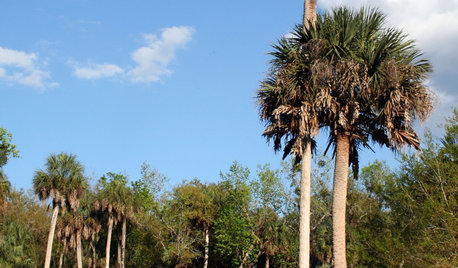

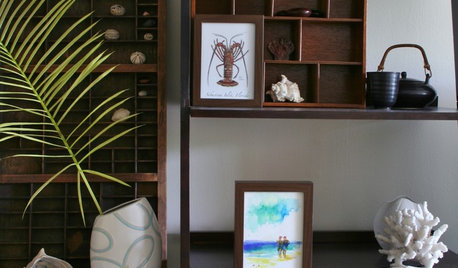


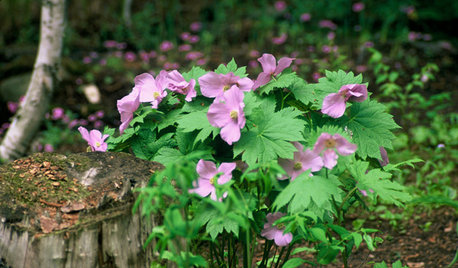


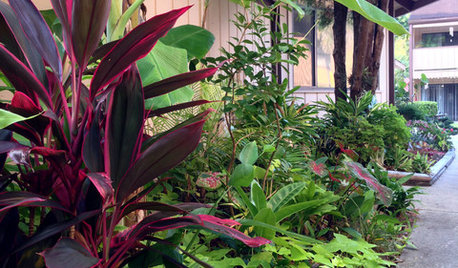
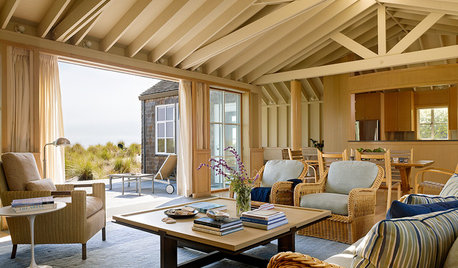



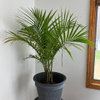
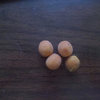
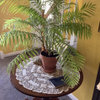
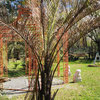
tropicalzone7
lzrddr
Related Discussions
Neanthe bell a palm - slow growing, or is there something wrong?
Q
Palm trees not growing taller
Q
Can you identify my new palm?
Q
New Palm Owner Question
Q
butiamanOriginal Author
gatraffic
gatraffic
jimhardy
butiamanOriginal Author
jimhardy
brooklyngreg
jimhardy
butiamanOriginal Author